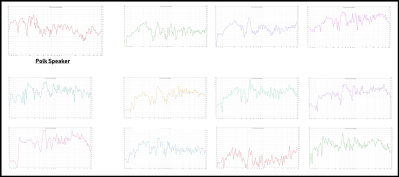Flat panel speakers are heavily reliant on the material they’re mounted on for the best acoustic quality. In particular, for DML (distributed mode loudspeaker) speakers, sound is produced through the distribution of vibration modes in the panel. You can easily spend far too much on special exciter foam or optimized materials for producing the best quality sound.
[Tech Ingredients] does a deep dive into how to build high-quality and low-cost DML speakers using some interesting materials, such as acoustic ceiling tiles and styrofoam. He analyzes their frequency based on the material and shape used and demonstrates how a full setup sounds with studio microphones and stereo speakers installed. The shapes can allow the resonances for different speakers to be translated so that they don’t overlap – peaks can be matched with troughs to produce a more even sound. Squares with rounded edges work the best for translating the resonance.

Balsa wood is mainly used for low frequencies and styrofoam for high frequencies, although the ceiling tiles work as well as either material and are significantly cheaper. Rather than retrofitting into drop ceiling metal frames, he instead installs his panels vertically. He shows the process for preparing the styrofoam and ceiling tiles for hanging, including tips for creating a makeshift circular saw for punching out holes and securing cotter pins with epoxy.
[Tech Ingredients] goes through experimenting with unusual shape and material combinations in order to produce the best possible speakers. It’s a fascinating video that walks through the ins and outs of DIYing your own set of speakers, and it’s worth a watch even just to hear about the acoustic properties of materials.
[Ed Note: Yes, this video is old in the teeth, but we keep getting tips for it, so it’s news to someone! And it’s cool regardless. But feel free to skip on if you’ve seen this one before.]
[Thanks Digital Corpus for the tip!]
No comments:
Post a Comment